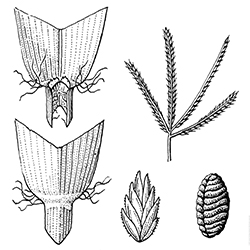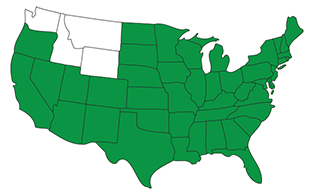

Goosegrass
Eleusine indica
Goosegrass is a perennial grassy weed that is also known as Silver Crabgrass, Wire-grass, Yard-grass, Bullgrass, Crowfoot-grass or by its scientific name, Eleusine indica. This lawn weed makes its home in sidewalk cracks and lawns.
Identify

Bunch

Folded

Membranous
Goosegrass can be identified as a horizontally growing, dark green annual grassy weed that forms a wiry, tough rosette. Its ligule is toothed and divided at the center, and its blades are folded along the mid-vein. Goosegrass sheaths are compressed, flattened and white near the base, but are also sparsely haired along the edges. Goosegrass seed heads typically contain anywhere from three to seven spikes forming at the tip of the seed stalk. The seeds are attached closely to the spike and generally germinate two to three weeks after Crabgrass lawn weeds.
Life Cycle
This perennial grassy weed is primarily found in lawns or growing through cracks in concrete and pavement. Goosegrass is commonly found throughout much of the continental United States. These perennial grassy weeds can germinate and spread from seeds, but they also produce a root structure (tubers, bulbs or corms) that can birth new weeds from your lawn's surface (using stolons) or from underground (using rhizomes). Perennial grassy weeds live two or more years and have a deeper root structure that can give rise to new weeds—even if you no longer see the weeds in your lawn.

Control
Goosegrass can be a troublesome lawn weed if it has been introduced to your yard. Its horizontal growth habit allows it to tolerate close mowing—plus this grassy weed is impervious to compacted soil and drought. For effective weed removal, professionally selected and applied weed control treatments are your best bet for eradication.







